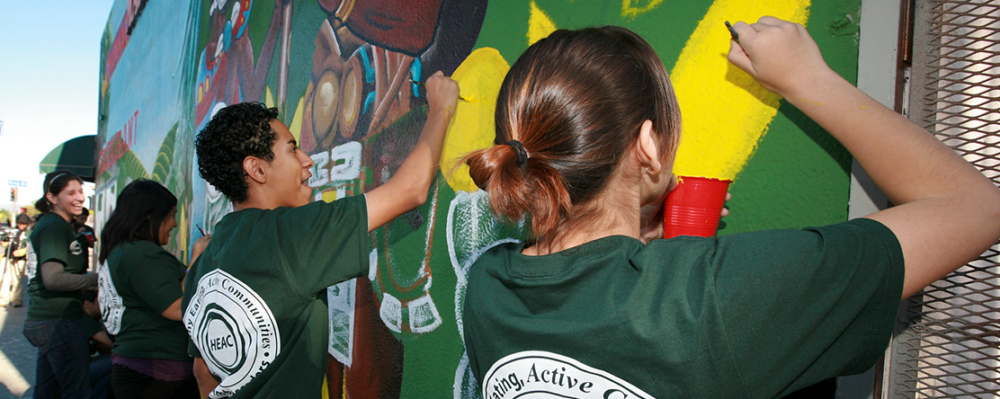
Survey Results: How BIPOC-led Community Development Corporations Engage With Healthcare to Advance Racial Equity
- Colleen Flynn, Shante Harding, and Jen Walden
-
Focus Areas
Capacity Building & Leadership, Health Care & Population Health -
Issues
Community Development, Population Health -
Expertise
Public-Private Partnerships -
Programs
Build Healthy Places Network

With funding from The Kresge Foundation and the W.K. Kellogg Foundation, PHI’s Build Healthy Places Network recently launched Community Innovations for Racial Equity (CIRE) to make racial equity an explicit goal of community development efforts and engage healthcare as a powerful and well-resourced partner to achieve shared racial equity goals. This initiative focuses on advancing community development and healthcare partnerships to effectively propel racial equity by supporting community power, exploring innovative community ownership models, and addressing the barriers and gaps in establishing partnerships.
The aim with CIRE is to adapt technical assistance and funding processes to center the expertise of the BIPOC-led CDCs. This co-creation model is supporting us to learn, grow, and deepen our racial equity commitments beyond CIRE to other programs and field changing work. These insights will help us co-create a model with our CDC partners to be responsive to the goals and needs of BIPOC-CDCs and to build tools and resources to advance shared power partnerships with healthcare.
Of the 41 organizations that participated in the early 2022 survey, 88% self-identified as BIPOC-led or in the process of becoming so. We share some key findings below:
Opportunities for BIPOC-led CDCs
BIPOC-led CDCs offered insights regarding specific opportunities to spur deeper investment and commitment to their work creating healthy, equitable communities. For example, collective efforts to increase civic engagement was deemed particularly important to include BIPOC leadership and voices regarding key priorities and needs. This included centering lived experience, building trust within and across communities, in relation to CDCs themselves, as well as with institutions that can build trust necessary to prioritizing partnerships with leaders and communities of color. Many noted that trust is built through effective communication, and redefining the narrative surfacing through community engagement would represent a new and important approach to community response and investments. Finally, the concept of cultural intelligence was named as a key opportunity, going beyond community engagement to address language barriers, cultural traditions, and building trust across diverse BIPOC communities.
Current Trends: What trends in the field are influencing BIPOC-led CDC’s work right now?
Not surprisingly, the impacts of Covid and the response & recovery from the pandemic – including the availability of federal relief funds and reconnecting with pre-pandemic community clients and leaders – was the most common trend mentioned. The continued challenges of systemic racism – and simultaneously the increased focus on racial equity – were other common themes. Beyond those leading responses, respondents provided a broad range of other influential trends they are currently experiencing, including the effects of gentrification and displacement.
Collaboration Across Sectors: Insights from the pandemic and from past partnership experiences
Based on recent trends, including the impact of Covid, as well as their own past partnership experiences, respondents noted a number of insights influencing successful collaboration. Cross-sector collaborations were cited as an opportunity to support increased competitiveness for funding and allow for broader perspectives and often a shift in programming. The need for dedicated funding to support collaboration, which is almost always time consuming and resource intensive was also raised. Finally, respondents reported a trend of grassroots driven neighborhood revitalization action plans with multi-agency collaboration rather than competition for financial resources.
“Cross-sector collaborations were cited as an opportunity to support increased competitiveness for funding and allow for broader perspectives and often a shift in programming.”
Championing Race-Conscious Work
The survey inquired both how organizations were championing race-conscious partnerships, policies, approaches and investments and what challenges they’ve encountered. Responses around targeted work and engagement were particularly interesting as respondents provided real-world examples including a Black Liberation Walking Tour with resident leaders and a mural program, which lifts up community stories in a creative way, while creating a new community landmark to claim place and a Community Benefits District (special property tax assessment district) to sustainably fund a non-police safety ambassador program in the neighborhood.
Challenges Faced in Advancing Racial Equity
The BIPOC-led CDCs surveyed were asked about the unique challenges they experience. Inequitable access to social, professional, and leadership networks were identified along with white organizations having the upper hand in infrastructure, leadership and decision making due to their long standing connections. Along the same lines, CDCs expressed an awareness of the stigma associated with BIPOC-led organizations and their legitimacy. Internally, they cite community needs and history as another major hurdle.
Four major areas surfaced when respondents were asked about the challenges of advancing racial equity
- Trust: There are challenges with community members trusting some of the CDCs surveyed due to systemic injustices in persistently marginalized communities that will not be eradicated immediately.
- Time: Adopting equitable policies and practices is time consuming, iterative, and bumpy because it requires listening, learning, and paying attention to equity in every part of the decision making process.
- Healthcare Support: There is a lack of healthcare support for race-conscious priorities and policies to address racial discrimination by recognizing and responding to the structural barriers that have long denied full social, political and economic participation to BIPOC communities.
- Sustainability: Developing a racial equity strategy that is inclusive, impactful and resilient is still challenging to fund and sustain. Securing flexible, long-term funding and ensuring BIPOC leadership throughout organizations, projects, and initiatives continues to be a challenge.
Community-Led and Community Ownership Models
58% of the respondents reported some level of undertaking community-led or community-ownership models. Routinely bringing together various facets of community problem solving using models like the CIM impact model, right to self-determination, and participatory research was cited. Respondents also stressed the importance of having residents who are most impacted by projects in their community at the decision making table. Another example included the development of a racial healing hub on land owned by a BIPOC-led organization that is thinking about collective ownership models like community land trusts.
Development of a Healthy Strategy
This survey also included questions to help us understand BIPOC-led CDCs’ existing healthcare engagement strategies and the support needed to pursue them.
Approaches to a Racial Equity Strategy with Healthcare Partners
93% of the respondents have existing healthcare partnerships and were asked to identify effective ways to develop a racial equity strategy to help shift power dynamics with their healthcare partners. Respondents mentioned collaborating with community grassroots institutions such as religious, ethnic, cultural, community health and professional organizations as a way to identify community’s needs and address racial equity issues. Some also encouraged healthcare representatives to take the time to visit the neighborhoods in their communities and get to know the residents. Taking things a step further, respondents reported having a racially diverse healthcare team with lived experience, beginning the partnership with a clear shared understanding of the health inequities, and desire to create more equitable pathways with shared power as impactful strategies to advance racial equity.
Conclusion
CIRE aims to support BIPOC-led CDCs in 9 cities, specifically aiming to support partnerships, power-sharing, and investments by healthcare to deepen commitments to racial equity. As we build this work, including supporting network cultivation across the site leaders, we intend to surface tools, insights, and lessons learned to help the field accelerate the critical work of locally rooted and community owned efforts creating health and well-being across the country.
Originally published by Build Healthy Places Network
Work With Us
You change the world. We do the rest. Explore fiscal sponsorship at PHI.
Support Us
Together, we can accelerate our response to public health’s most critical issues.
Find Employment
Begin your career at the Public Health Institute.


